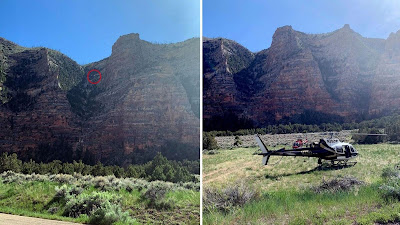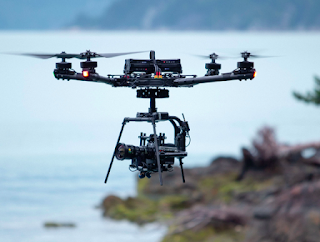 |
| The search and rescue team launched a drone to identify the man’s location and relayed to DPS helicopter crews to hoist him from the cliff. (Uintah County Sheriff’s Office) |
A Utah climber who fell and cracked his head while
scaling a cliff by himself on Sunday was rescued after he regained
consciousness, and nearby campers heard his cries for help, authorities said.
The 52-year-old man, whose name has not been released,
was climbing up a slot in the cliff near Jones Hole National Fish Hatchery, by
the Colorado border, when he fell an unknown distance, the Uintah County
Sheriff’s Office said. He told rescuers he didn’t know how long he was
unconscious before he awoke and yelled for help.
The group of campers, which included a member of the
sheriff’s search and rescue team, heard the stranded man’s calls. They were
unable to pinpoint the man’s location because his cries echoed off the cliff
walls. They called authorities around 1:40 p.m., setting off a five-hour rescue
operation.
"The area he was climbing in is out of the way. You
wouldn't really expect someone to be climbing there," Sheriff's Sgt.
Dustin Cheshire said. "If it hadn't been for the camping group with a
Wasatch County search and rescue member who heard this guy yelling and
screaming, it's unlikely anyone would have found him."
The sheriff’s office sent a search and rescue team and
requested helicopter crews from both the Utah Department of Public Safety (DPS)
and Classic Air Medical.
The Classic Air Medical crew spotted the man after
arriving, but the steep terrain prevented them from reaching him, the sheriff’s
office said.
The search and rescue team launched a drone to identify
the man’s location and told the DPS helicopter crew. The DPS crew was able to
reach the man and hoist him from the cliff.







